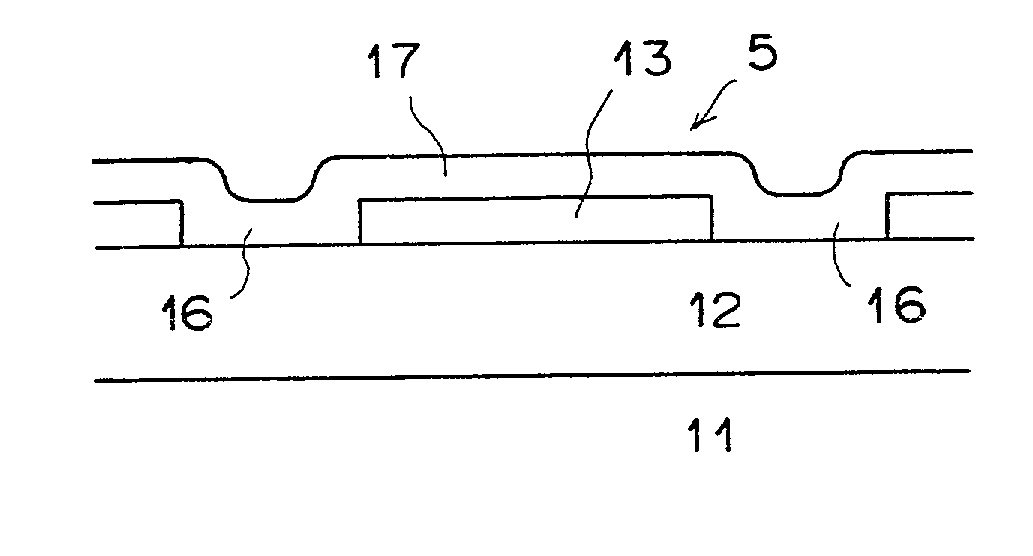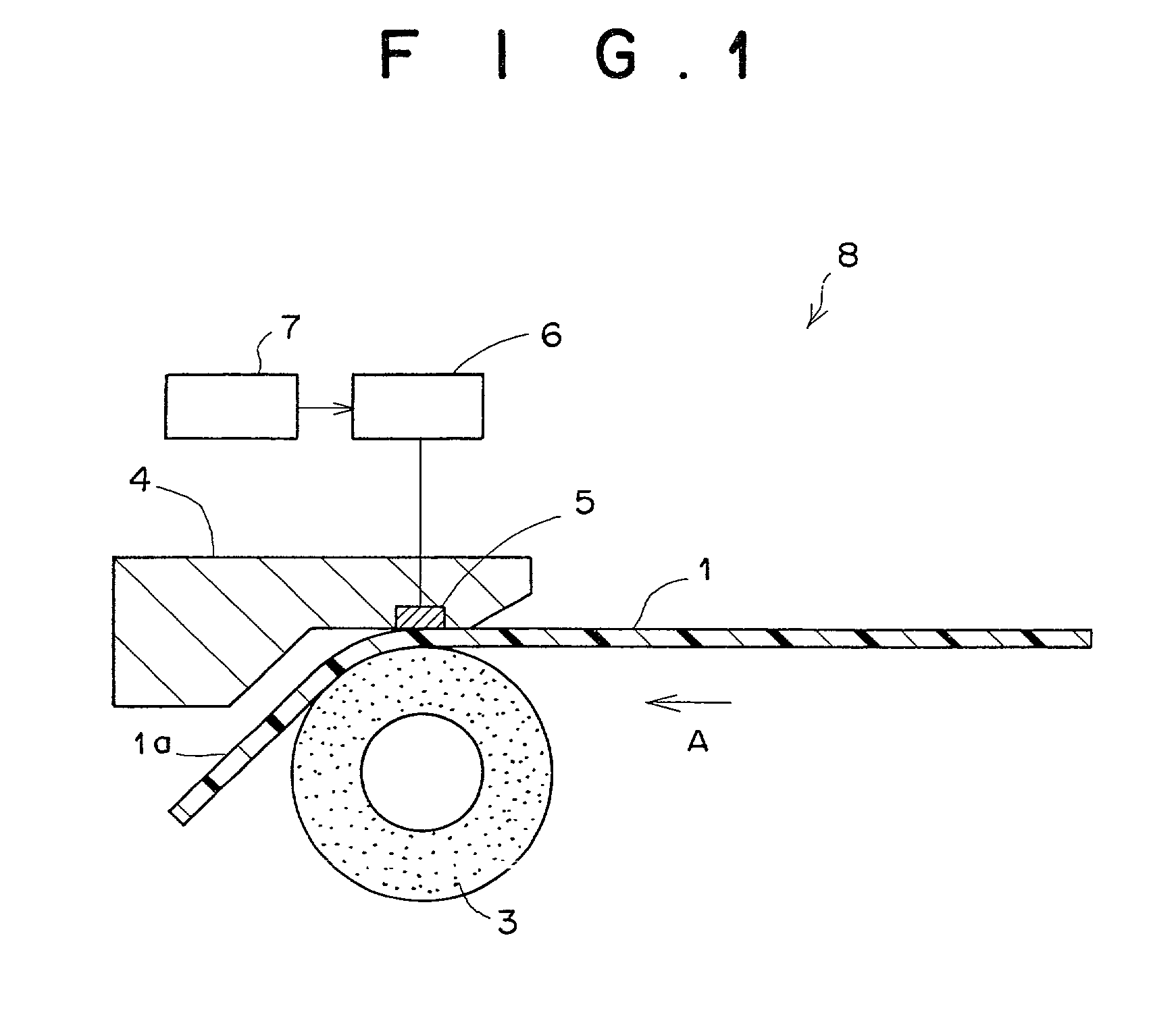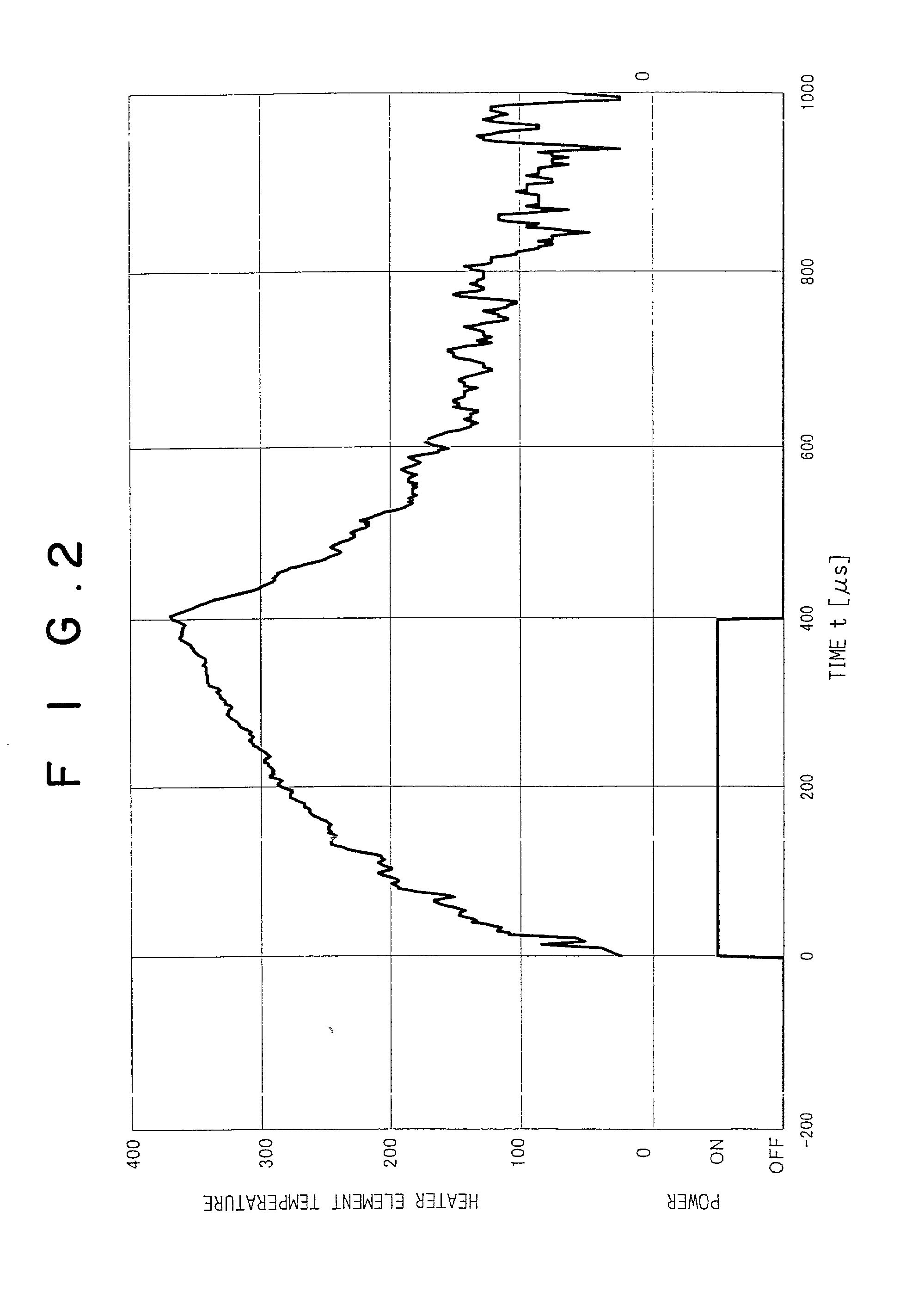Method of and apparatus for making heat-sensitive stencil and heat-sensitive stencil material
Inactive Publication Date: 2002-02-07
RISO KAGAKU CORP
View PDF0 Cites 3 Cited by
- Summary
- Abstract
- Description
- Claims
- Application Information
AI Technical Summary
Problems solved by technology
Further, the measurement is static and does not reflect the actual perforation.
Thus the reported heat shrinkage factor or heat shrinkage stress does not conform to the actual perforation.
Accordingly, the properties of the film concerning to the degree to which the perforations are discrete by pixel and the shape of the perforations is stabilized are generally incompatible with the sensitivity to perforation of film and the speed at which the film is perforated.
Further, it is difficult to read from the TMA data the performance of the film representing the perforating speed, the stability of the shape of perforations and the like except the sensitivity to perforation.
Even about the sensitivity to perforation, it is difficult to estimate the difference in the sensitivity to perforation between film samples which are slightly different from each other, for instance, in TMA curve since it is actually impossible to prepare a variety of film samples which are different from each other in one or more particular factor such as the TMA curve with the other factors held to be the same.
Accordingly, when a suitable kind of resin film is to be selected, stencils must be actually made using a variety of resin film samples, which adds to the development cost.
Accordingly, it has been very difficult to know, without experience and sense, how the physical properties of the resin film should be changed on the basis of the result of experiment in order to obtain a desirable form of perforation, which has been made difficult development of new products and improvement of the performance of the products.
Unsatisfactory design of the performance of the resin film can result in the case where the sensitivity to perforation and perforating speed are too poor to obtain a high-resolution stencil under a practical condition though the perforations are discrete and substantially uniform in shape or in the case where the perforations are not discrete and not uniform in shape though the sensitivity to perforation and perforating speed are satisfactory.
Thus, it has been impossible to develop, on the basis of conventional data experimentally obtained, a method of and an apparatus for making a stencil by thermally perforating a thermoplastic resin film of heat-sensitive stencil material, and a thermoplastic resin film for heat-sensitive stencil material in which demands for uniformity in shape of perforations, sensitivity to perforation and perforating speed are all sati
Method used
the structure of the environmentally friendly knitted fabric provided by the present invention; figure 2 Flow chart of the yarn wrapping machine for environmentally friendly knitted fabrics and storage devices; image 3 Is the parameter map of the yarn covering machine
View moreImage
Smart Image Click on the blue labels to locate them in the text.
Smart ImageViewing Examples
Examples
Experimental program
Comparison scheme
Effect test
 Login to View More
Login to View More PUM
| Property | Measurement | Unit |
|---|---|---|
| Fraction | aaaaa | aaaaa |
| Fraction | aaaaa | aaaaa |
| Fraction | aaaaa | aaaaa |
Login to View More
Abstract
A stencil is made by thermally forming perforations arranged in both a main scanning direction and a sub-scanning direction in a thermoplastic resin film of heat-sensitive stencil material by the use of a heat source which is heated through supply of energy. Supply of energy to the heat source is cut so that the quotient obtained by dividing a maximum diameter of a perforation at the time at which supply of energy to the heat source is cut by the energizing time is not smaller than 0.015 m/s and not larger than 0.23 m/s.
Description
[0001] 1. Field of the Invention[0002] This invention relates to a method of and an apparatus for making a stencil by thermally perforating a thermoplastic resin film of heat-sensitive stencil material by a thermal head or the like, and to a heat-sensitive stencil material. More particularly, this invention relates to improvement in shape of perforations, printing quality and stencil making speed.[0003] 2. Description of the Related Art[0004] Methods of making a heat-sensitive stencil are broadly divided into a method in which the resin film side of the heat-sensitive stencil material is brought into close contact with an original bearing thereon an image depicted in a carbon-containing material and the resin film is perforated by heat generated by the image upon exposure to infra-red rays and a method in which the resin film of the heat-sensitive stencil material is imagewise perforated by two-dimensionally scanning the resin film side of the heat-sensitive stencil material with a ...
Claims
the structure of the environmentally friendly knitted fabric provided by the present invention; figure 2 Flow chart of the yarn wrapping machine for environmentally friendly knitted fabrics and storage devices; image 3 Is the parameter map of the yarn covering machine
Login to View More Application Information
Patent Timeline
 Login to View More
Login to View More IPC IPC(8): B32B3/24B41C1/055B32B27/00B41C1/14B41N1/24
CPCB32B3/266Y10T428/24331B41C1/144B32B27/00B32B2305/026B32B27/12B32B27/10B32B2329/04B32B2323/10B32B2323/04B32B27/08B32B2262/023B32B27/32B32B2398/10B32B5/022B32B2367/00B32B2305/18
Inventor OHSHIMA, KENJINAKAMURA, JUN
Owner RISO KAGAKU CORP
Features
- Generate Ideas
- Intellectual Property
- Life Sciences
- Materials
- Tech Scout
Why Patsnap Eureka
- Unparalleled Data Quality
- Higher Quality Content
- 60% Fewer Hallucinations
Social media
Patsnap Eureka Blog
Learn More Browse by: Latest US Patents, China's latest patents, Technical Efficacy Thesaurus, Application Domain, Technology Topic, Popular Technical Reports.
© 2025 PatSnap. All rights reserved.Legal|Privacy policy|Modern Slavery Act Transparency Statement|Sitemap|About US| Contact US: help@patsnap.com



